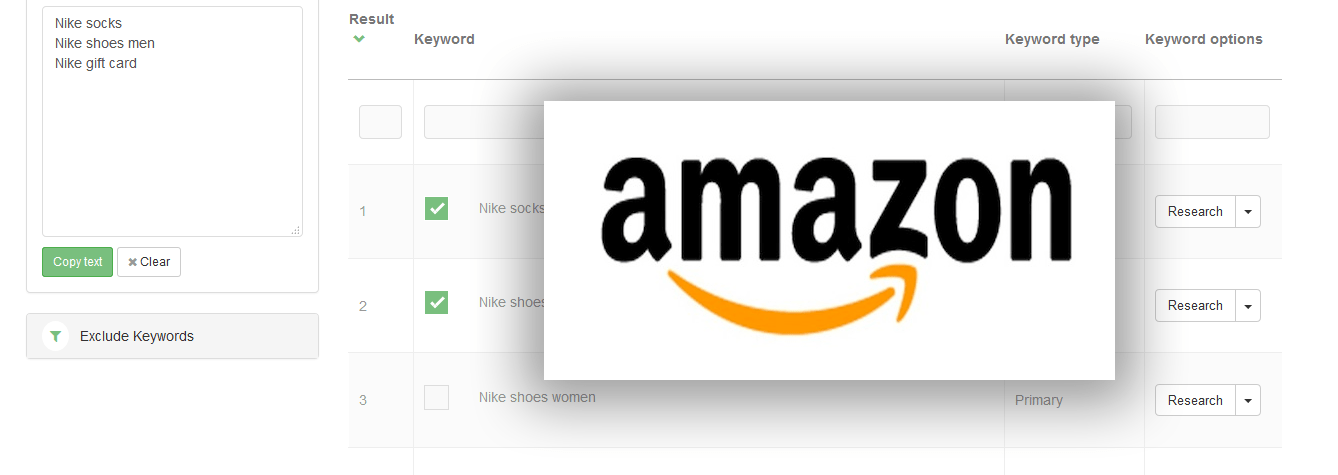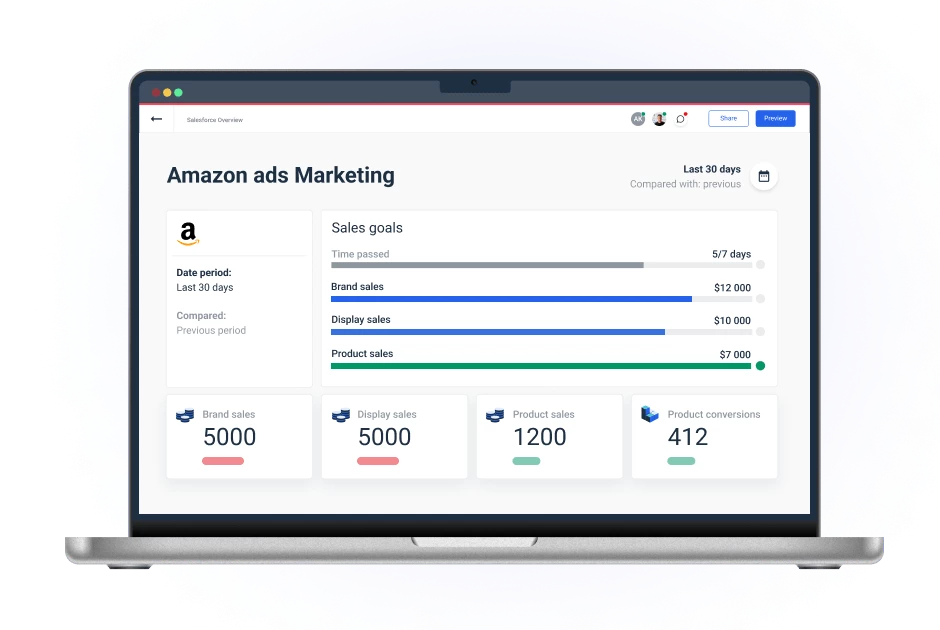More and more Amazon sellers have started to integrate advertising into their seller strategy. Unfortunately, many people start their Amazon advertising experience on the wrong foot, which leads to costly blunders.
Although Amazon PPC can sound a bit foreign to some sellers, they don’t realize they’re committing costly mistakes until it’s too late.
In this post, we’re going to discuss what these Amazon advertising mistakes are and how you can avoid committing them.
What’s Amazon Advertising?

Mainly, Amazon serves as an eCommerce site where merchants sell products. It also allows advertisers to showcase ads on these sites. Amazon ad will appear as banner ads, suggested products, or within product searches.
Moreover, when advertising on the platform, you’re only paying for ads that customers will click on. Usually, these views are free. However, when users want to click more, that’s when you’ll get charged for these ads.
What the system does is it lets thousands of people check your products, and you only pay for those who are interested in them. Moreover, how much you will pay for these ads is entirely up to you because you choose the maximum amount you’re willing to pay for every click.
Thus, the more you pay for these ads, the more Amazon will feature them on its platform.
The Benefits of Amazon Advertising

Amazon is a fantastic eCommerce platform since it offers massive traffic. Thus, if you advertise on it, you can access many people who could be interested in what you’re offering.
Thus, your product will show up to many people if you’re on the platform. This eventually leads to more clicks, and these clicks, of course, lead to revenues and sales.
Besides delivering massive traffic to your site and product views, Amazon also makes it likely for customers to convert.
That’s because people visiting Amazon already have a high purchasing intent. Since they’re already at the bottom of the funnel, it’s so much easier to convince them to make a purchase.
Here are other known benefits of Amazon advertising:
- You can sell more during holidays: Customers purchase billions of items on the platform, especially during the holidays.
- You gain access to millions of customers: There are approximately 144 million customers that the platform manages to draw in, discover, and find new products on all kinds of devices.
Most Common Amazon Advertising Mistakes
Now that we’ve walked you with the basics, here are some of the most common Amazon advertising mistakes marketers make when promoting their products on the platform—especially those that can affect your chances to win the Amazon Buy Box and maximize sales performance:
1. Poor selection of keywords
Keyword research is an essential component for Amazon Sponsored Products. Poorly chosen keywords can negatively affect your ad campaign and hurt your sales.

Moreover, misleading Amazon with the wrong data can cause your account to be banned. Because many people are using this strategy to gain more traffic and get more clicks, this is the part where they’re doing it wrong.
Let’s say that the keyword you’re bidding on is “faded jeans.” However, you’re not selling the faded one. Although you’ll get clicks, you won’t be getting conversions. This, in turn, hurts the chance for your prospects to convert.
The key is bidding on keywords that you think are the most relevant to your product.
2. Too much-branded spend
Many sellers will also scratch their heads, wondering why their sales have plateaued or why their sales drop so much even if their ad account is efficient.
These are clear signs that ads show up mostly to branded targets, which means the brand name and catalog. This can be problematic for several reasons. One of the biggest reasons is that you’re spending your budget on shoppers who would have bought the products.
Another thing is that people aren’t behaving differently when making a purchase. People who know your brand will more likely buy your products. It’s also going to cost less to sell to them. However, those who don’t know your brand will take some time to convince. Thus, it’s going to cost more.
Therefore, if your ad account shows up to be highly efficient, little money is usually spent on growing the brand. Your total sales will stay the same, or they’ll dry up.
3. Neglecting negative keywords
Marketers who use negative keywords can decrease their overall ad costs without necessarily reducing the visibility and conversions for relevant prospects.
Let’s say you’re selling wine glasses and bidding on the keyword “glasses.” Usually, this had a broad match. Users could type “eyeglasses,” and then the ad will populate. Hence, it is really important when you have an appealing content and suitable SEO strategy to find out the best keywords.
But if users click on the ad accidentally, you’ll be charged for the click. So, as much as possible, ensure you don’t neglect negative keywords. This prevents unrelated clicks that don’t bring any revenue to your business.
4. Relying on one targeting type
Regarding Amazon advertising system, there are two ways you can approach targeting: automatic and manual targeting.
Manual targeting is what it sounded like- you’re manually choosing which products, product categories, or keywords you wish to target. This gives you a lot of control and flexibility on how you want your ads to appear.
On the other hand, automatic targeting takes away control. Rather than picking what you want to target, Amazon will show your ads on product pages and search results when relevant. It will also eliminate the need to create keyword lists and search terms when they come about.
Note that both strategies have their own pros and cons. However, the best approach is a combination of the two. By running both campaigns side by side, you’ll reap more significant rewards.
Manual campaigns let you refine the ads and keywords that work well. On the other hand, an automatic campaign gives scale and finds new terms that you can target.
5. Not structuring your ads properly
Although it might be tempting to group as many product detail pages as possible into a single ad, it is challenging to know which products give off rich results when running Amazon advertising.

The more products you have, the harder it will be to match clicks and sales to individual products. Thus, you might want to assign one product detail page to a single ad group so you’ll know how every unique product does in an ad campaign.
If you’re determined to group more than one to save time and maximize productivity, then you need to ensure that the products are similar—for example, a green sweater and a red sweater. LitCommerce allows you to sell on multiple marketplaces at once.
6. Not using customer search term report
A customer search report lets you see the precise search terms shoppers are trying to get keywords to trigger.
This will, of course, depend on your goals, but the standard data points you might want to keep an eye on in the report include branded vs. unbranded searches, impression volume, CTRs, CPC, etc.
By monitoring these metrics, you can ensure that your ads will be shown to the right people with the most cost-effective CPC.
7. Not categorizing campaigns
Knowing how to categorize your campaigns is another essential element to advertising success, but many marketers overlook this Amazon advertising aspect.
In online advertising, the structure is everything if you want to boost your eCommerce conversions. Yet, plenty of markers have to establish their work on the platform. This leads them to difficulty knowing which products are performing well and which ones are falling behind.
In turn, this makes it challenging to know which parts of your ad campaigns are working and which ones aren’t.
8. Making changes and reducing ad budget too quickly
Like most ad platforms, you want to give your campaigns at least 7-14 days of running time before making significant changes.
It would be best if you also considered that the reporting for Amazon advertising has a 48-hour delay for most reports. So, you can take this delay into account when adjusting your campaigns.
Moreover, a manual campaign on Amazon usually takes 30 days to age.
9. Skipping A/B testing
One common Amazon Advertising mistake is marketers skipping A/B testing. As a marketer, you need to try the best strategy that works for you. You must test images, headlines, titles, logos, etc., to know what works best.
You also need to invest in proving to your customers that you’re selling quality products. It would help if you ran A/B tests to know what sells the best. Maybe one particular product attracts more than the other? These are some of the tests that you might have to perform.
Over to You
No ad campaign is perfect, especially when the eCommerce market is constantly changing. However, you may have a better chance of sales success if you’re aware of the Amazon advertising mistakes a lot of marketers make with their ad campaigns. Now is the right time to know the strategies marketing experts use, research the right keywords, and then structure your ads so that you’ll see your sales skyrocket.
By taking a detail-oriented and proactive approach, you can avoid these most common mishaps. Thus, you’ll have happy customers and successful campaigns in the long run. Good luck!



